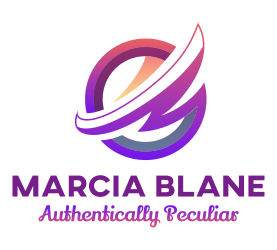Emotional Safety | The Foundation for Mental Wellness & Healing
As a Licensed Mental Health Counselor, I often see how emotional safety—or the lack of it—shapes mental well-being, relationships, and self-perception. Many people struggle with anxiety, emotional distress, and difficulty trusting themselves or others, and they don’t always recognize that the underlying issue is a lack of emotional safety.
Emotional safety is more than just comfort in an environment—it’s the ability to express yourself authentically, set boundaries without fear, and feel secure in your emotions and interactions. When emotional safety is compromised, it can lead to self-doubt, stress, and difficulty forming or maintaining healthy relationships. But when it is prioritized and nurtured, emotional safety allows for growth, confidence, and healing.
If you’ve ever felt emotionally unsafe, unheard, or dismissed, it’s time to explore what emotional safety means for you and how you can start creating it in your life.
What is Emotional Safety?
Emotional safety is the foundation of mental wellness. It is the ability to:
✔ Express your thoughts, emotions, and needs without fear of judgment or retaliation
✔ Trust yourself and others to respect your emotional experiences and boundaries
✔ Navigate difficult situations with a sense of self-assurance and inner security
✔ Feel valued, heard, and validated in relationships, workplaces, and personal spaces
Without emotional safety, individuals often develop coping mechanisms that prioritize survival over true connection, leading to behaviors such as:
🚩 Emotional suppression – Ignoring your feelings to avoid conflict or rejection
🚩 People-pleasing – Prioritizing others’ needs over your own to maintain peace
🚩 Hyper-independence – Avoiding vulnerability due to fear of betrayal or disappointment
🚩 Over-explaining or over-apologizing – Seeking constant reassurance to feel emotionally secure
Understanding where you feel emotionally safe or unsafe is an essential part of reclaiming your emotional well-being.
The Connection Between Emotional Safety & Mental Health
Research in psychology and neuroscience shows that emotional safety directly impacts mental and physical well-being. When people feel emotionally unsafe, the body and brain remain in a heightened state of stress, activating the fight, flight, freeze, or fawn response. This can lead to:
✔ Chronic stress, anxiety, and overthinking
✔ Difficulties with self-esteem and confidence
✔ Relationship struggles, including trust issues and avoidance of vulnerability
✔ Physical symptoms like headaches, digestive issues, and muscle tension
However, when emotional safety is established, the nervous system shifts into a state of calm and regulation, allowing for:
✔ Greater emotional resilience and self-awareness
✔ Improved communication and conflict resolution
✔ Stronger, healthier relationships built on trust
✔ A deeper sense of confidence and emotional freedom
Emotional safety is essential for healing from trauma, navigating life changes, and fostering self-growth.
How to Create Emotional Safety in Your Life
If you’ve struggled with emotional safety, you are not alone—but you do have the power to create secure, supportive spaces for yourself. Here are key strategies to strengthen your emotional well-being:
1. Trust Your Inner Voice
Many people struggle with self-doubt and second-guessing due to past emotional wounds. Rebuilding self-trust is crucial for emotional safety.
✅ Validate your emotions without minimizing or dismissing them
✅ Avoid seeking constant external validation—trust your instincts
✅ Allow yourself to make decisions based on your own needs and values
🔎 Reflection Question: Do you trust your emotions and decisions, or do you rely on others for reassurance?
2. Set Clear Boundaries
Emotional safety is compromised when boundaries are ignored, dismissed, or unclear. Boundaries help protect your peace, mental clarity, and emotional well-being.
✅ Identify what makes you feel drained or uncomfortable in relationships and interactions
✅ Practice saying "no" without guilt—you do not have to justify your boundaries
✅ Surround yourself with people who respect your emotional needs
🔎 Reflection Question: Are your boundaries clear, or do you often feel obligated to please others at your own expense?
3. Recognize Unsafe Spaces & Patterns
Not every environment fosters emotional safety. Being aware of emotionally unsafe spaces allows you to make choices that protect your well-being.
🚩 Do you feel constantly criticized, dismissed, or unheard?
🚩 Are you walking on eggshells to avoid upsetting someone?
🚩 Do you suppress your emotions out of fear of conflict or rejection?
If a space or relationship consistently makes you feel unsafe, consider limiting your exposure or redefining your interactions.
🔎 Reflection Question: Do you spend time in spaces that make you feel seen and valued, or do you tolerate emotional discomfort to maintain relationships?
4. Strengthen Emotional Intelligence
Emotional intelligence is the ability to recognize, understand, and regulate emotions—both in yourself and others. It is a powerful tool for navigating emotional safety.
✅ Identify your triggers and emotional responses
✅ Learn how to self-soothe and regulate your emotions
✅ Develop healthy coping mechanisms instead of reacting impulsively
🔎 Reflection Question: How do you currently manage emotional distress, and what healthier alternatives could you explore?
5. Reframe Your Narrative & Heal from Emotional Wounds
Many people struggle with internalized negative beliefs from past emotional harm. Reframing your narrative helps you reclaim your emotional safety and build a stronger sense of self.
✅ Challenge self-limiting beliefs that stem from trauma or past relationships
✅ Acknowledge that your emotions are valid and worthy of expression
✅ Engage in self-compassion and forgiveness to release emotional burdens
🔎 Reflection Question: Are you holding onto an emotional narrative that no longer serves your healing?
Final Thoughts: Emotional Safety is a Necessity, Not a Luxury
Creating emotional safety is a vital part of mental and emotional well-being. When you prioritize self-trust, boundaries, and emotional awareness, you give yourself the permission to heal, grow, and live authentically.
💡 Your Challenge: Take time this week to evaluate where you feel emotionally safe or unsafe, and commit to at least one action that strengthens your emotional security.
"Emotional wellness starts with safety—honor your emotions, trust yourself, and take control of your well-being."

